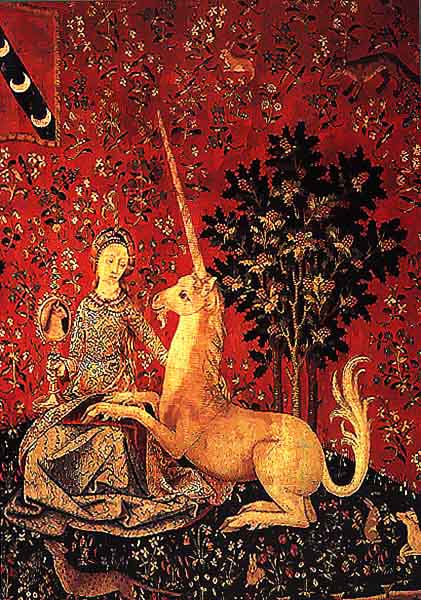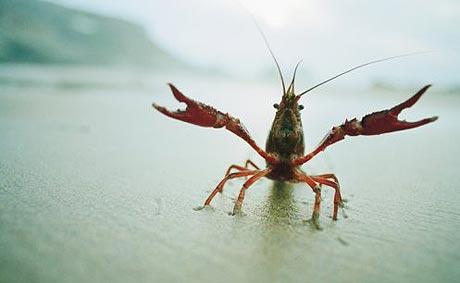posted by Simon Kemp
Today, we have a short piece of bilingual theatre for you:
LA LICORNE ET L’ÉCREVISSE
AN ETYMOLOGICAL DRAMA IN THREE ACTS
ACT ONE
A long time ago, in a castle in England. GUINEVERE, a damsel, is embroidering a needlepoint picture of a horse with a horn sticking out of its forehead.
Enter BISCLAVRET, a French knight on holiday, and ISEUT, his lady-friend.
BISCLAVRET (to Guinevere, trying out his best English): Is very nice! What is called?
GUINEVERE (without looking up): ‘Unicorn’.
BISCLAVRET: Excusing me, once again, how you say name?
GUINEVERE (with limited patience): Unicorn.
ISEUT (to Bisclavret): Qu’est-ce qu’elle a dit, l’anglaise?
BISCLAVRET : Elle dit que c’est une icorne.
ISEUT : Ah, bon ?
ACT TWO
A château, somewhere in France. ISEUT is busy weaving a tapestry based on a new design she saw on a recent trip to England.
Enter BRENGAINE, her maid.
BRENGAINE: Que c’est beau, madame! En fait, c’est quoi le cheval avec la corne au front?
ISEUT : L’icorne.
BRENGAINE : Ah, ça s’appelle donc une licorne ! Je vais apprendre ce mot à tous mes amis !
OK, so it may not have happened precisely in that way. In fact, the route taken from the Latin unicornis to the French licorne more likely travels via the Italian alicorno. Either way, though, the evolution of the French word really does come through this kind of successive mishearings, adding and subtracting letters at the beginning of the word and then crystalizing the mistake into the accepted form of the word.
Words invented by mistake like this are surprisingly common, especially when two languages are in contact and the speakers of one language are not always entirely clear what the speakers of the other one are on about. Famously, there are place names, such as Yucatán in Mexico, which were diligently recorded by European explorers as the local name for the area, but which apparently mean ‘What?’ or ‘What are you saying?’ in the local language. With English and French, misunderstandings have happened in both directions between the two languages…
ACT THREE
GUINEVERE and her friend MORGAN LE FAY are visiting ISEUT in her château. The three chums are eating crisps* and paddling in the moat.
MORGAN LE FAY (suddenly): Ugh! There are horrible things scuttling about under the water! Ow! One of them has pinched my toe! Iseut, ma chérie, comment s’appelle cette bête?
ISEUT (indistinctly, through a mouthful of crisps): L’écrevisse.
MORGAN LE FAY: Elles s’appellent les créviches?
ISEUT (already bored and not really listening): Oui, c’est ça.
GUINEVERE: What did she say it was? A cray-fish?
MORGAN LE FAY: Yeah, something like that.
GUINEVERE: Funny, looks more like a lobster to me.
*In pre-Columbian Europe, crisps were made out of thinly sliced fried turnips.
Again, a certain amount of dramatic licence is involved in this reconstruction. Strictly speaking, both the modern French écrevisse and the English crayfish are descended from the Old French word, crevice. But the fish of crayfish most definitely arises from a corruption of the sound of that last syllable,‘veece’ in the French word, which someone at some point misheard as ‘fish’. And that, dear reader, is how this little fellow…
…who is clearly not a fish at all, came to be known in English as a crayfish.



wonderful piece !